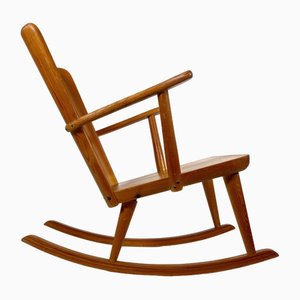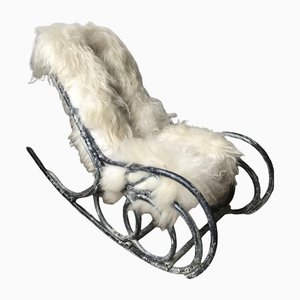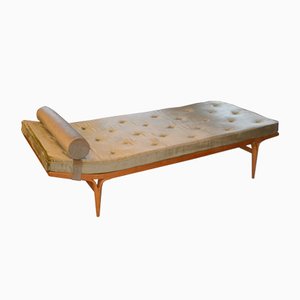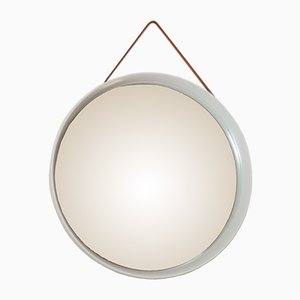Versandkostenanfrage
Wir kalkulieren den Versandpreis, sobald wir Ihre Anfrage erhalten.
Sie folgen jetzt Schaukelstühle. Sie können Benachrichtigungen in Ihren Kontoeinstellungen verwalten.
Sie folgen nicht mehr Schaukelstühle.
Versandkostenanfrage
Wir kalkulieren den Versandpreis, sobald wir Ihre Anfrage erhalten.
Das könnte Sie auch interessieren
Gesponserte Produkte
Sgarsul Sessel von Gae Aulenti für Poltronova, 1960er

Schaukelsessel von Thonet, 1920er

Skandinavischer Schaukelstuhl aus Kiefernholz von Göran Malmvall für Svensk Fur, 1950er

Antiker Schaukelstuhl von Thonet

Objekte dieses Händlers
Schwedische Vintage Teak Satztische von Swante Skogh für Seffle Möbelfabrik AB

Krus Schrank von Yngve Ekström für Westbergs Möbler, 1962

Berlin Laminiertes Buchenholz Tagesbett von Bruno Mathsson für Firma Karl Mathsson, 1967

Blauer Hochflorteppich von Viola gråsten für NK textilkammare, 1966

Schul Hängelampe von Hans Agne Jakobsson für Markaryd, 1965

Verstellbare Vintage Tischlampe mit Zwei Armen

Couchtisch von David Rosén für Nordiska Kompaniet, 1950er

Schwedischer Mid-Century Couchtisch von Östen & Uno Kristiansson für Luxus, 1962

Tischspiegel mit Holzrahmen von Uno & Osten Kristiansson für Luxus, 1960

Mid-Century Tischlampe aus Eiche von Uno & Östen Kristiansson für Luxus, 1960er

Mademoiselle Stühle von Ilmari Tapiovaara für Edsby Verken, 1959, 2er Set

Mid-Century Sessel von Hans Olsen für NA Jörgensens Möbelfabrik, 1955

Vintage Messing & Eiche Couchtisch von Nordiska Kompaniet

Kommode von Angarths, 1949

Modell 137 2-Sitzer-Sofa & 3-Sitzer-Set von Finn Juhl für France & Søn, 1953

Schwedischer Spiegel aus massivem Eichenholz von Uno und Östen Kristiansson für Luxus, 1967

Schwedischer Mid-Century Beistelltisch

Mid-Century Stuhl von Ruda für Nk-Bo, 1959

Vintage Medizinstühle aus Metall, 1965, 2er Set

Floraler Glas Kronleuchter von Simon & Schelle, 1960

Weitere Produkte
Schreiben Sie uns
Ein Angebot machen
Uns ist aufgefallen, dass Sie neu bei Pamono sind!
Bitte akzeptieren Sie die Allgemeinen Geschäftsbedingungen und die Datenschutzerklärung
Schreiben Sie uns
Ein Angebot machen
Fast geschafft!
Um die Kommunikation einsehen und verfolgen zu können, schließen Sie bitte Ihre Registrierung ab. Um mit Ihrem Angebot auf der Plattform fortzufahren, schließen Sie bitte die Registrierung ab.Erfolgreich
Vielen Dank für Ihre Anfrage! Unser Team meldet sich in Kürze bei Ihnen zurück.
Wenn Sie Architekt*in oder Inneneinrichter*in sind, bewerben Sie sich hier um dem Trage Program beizutreten.